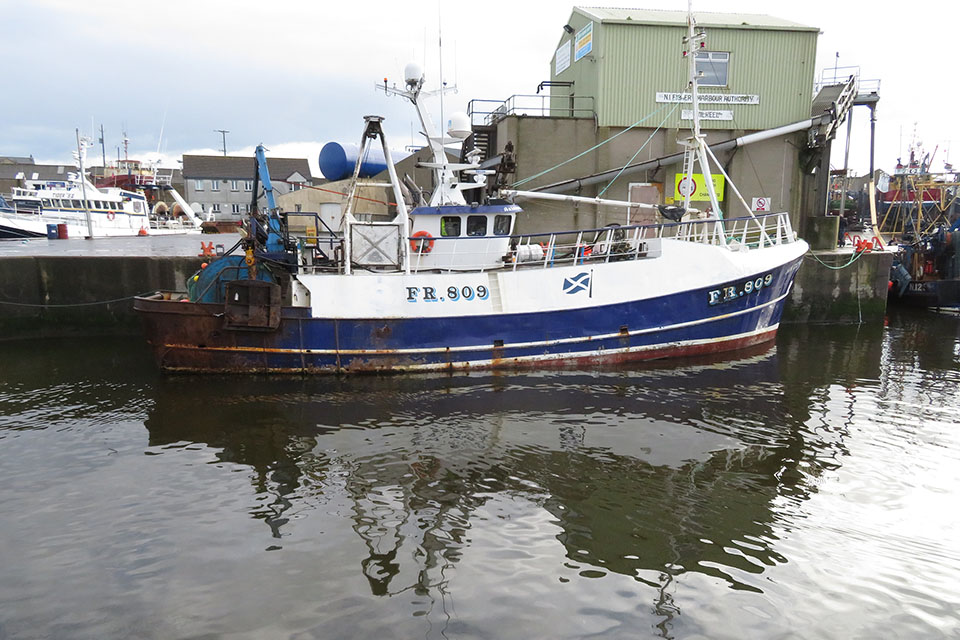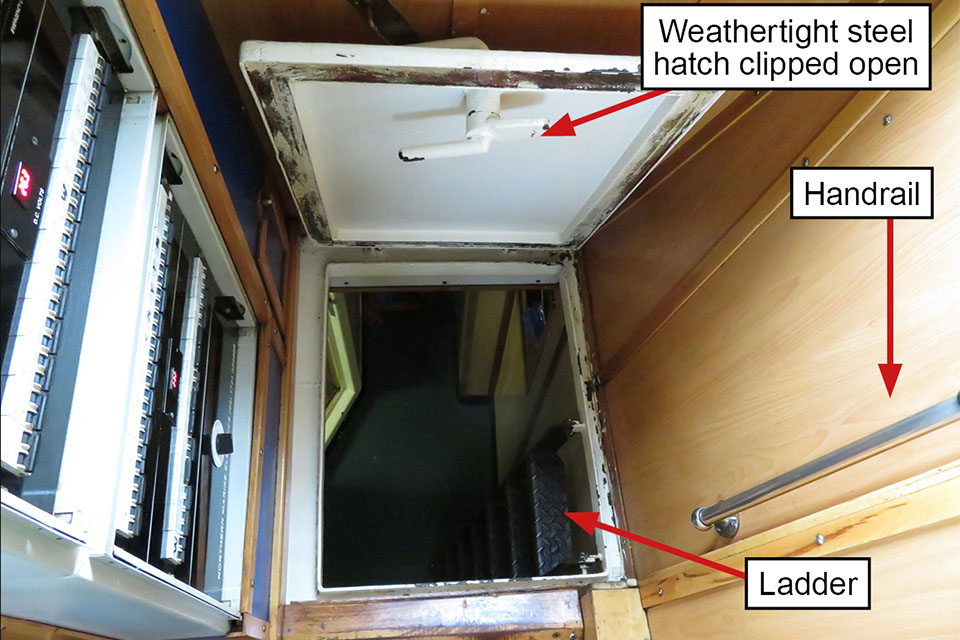Safety flyer to the fishing industry - Artemis
Published 9 January 2020
1. Summary
Fishing Vessel Artemis (FR 809) fatal fall within accommodation space on 29 April 2019
2. Narrative
At about 1630 on 29 April 2019, the skipper of the UK registered fishing vessel Artemis (Figure 1) suffered severe head injuries and died after he fell head-first through an access hatch between the vessel’s wheelhouse and its mess deck 2.1m below. The vessel was berthed alongside in Kilkeel, Northern Ireland and the skipper had just returned from an afternoon ashore with one of his deckhands. They had both spent 3 hours in a local public house drinking alcohol.

Figure 1: Artemis alongside Kilkeel, Northern Ireland
It was not possible to determine whether the skipper slipped, tripped or stumbled before he fell through the hatch because there was no one in the wheelhouse to witness it. However, it was apparent that the access route layout, which had been modified after build, and the effects of alcohol, both contributed to the fall and the severity of the injuries suffered.
MAIB accident statistics indicate that, since 1992, alcohol was a contributing factor in 62% of the 42 fishing vessel fatalities that have occurred while in port.
3. Safety lessons
Artemis was in port and its skipper and deckhand were not undertaking any work activities when the accident happened. Nevertheless, access to and from fishing vessels in port, and movement around their decks can be very hazardous. While limited alcohol consumption by crew living on board fishing vessels when in port and off duty might be considered acceptable, excessive consumption will severely undermine an individual’s judgment and coordination. A fishing vessel owner’s drug and alcohol policy that provides a clear definition of when crew are on or off duty, and ensures that they are aware of the circumstances under which they may be required to undergo drug and alcohol testing, can help prevent future accidents.
Post-build modifications to the access route between the vessel’s wheelhouse and the mess deck increased the likelihood and consequences of someone falling through the mess deck hatch. It placed those working in the wheelhouse at significant risk of falling through an unguarded opening (Figure 2). Fishing vessel risk assessments understandably concentrate on the dangerous activities that surround the operation of the vessel’s fishing equipment, however, the risks posed by internal hatches, ladders and stairways should not be overlooked. In this case, although the vessel had been surveyed many times since the modifications were made to the wheelhouse hatch and ladder, it was clear that the hatch required a physical barrier to prevent personnel inadvertently falling through the opening.

Figure 2: Hatch and ladder to crew accommodation
Our accident investigation report is available at: https://www.gov.uk/maib-reports/fall-on-board-fishing-vessel-artemis-with-loss-of-1-life
For all general enquiries:
Marine Accident Investigation Branch
First Floor, Spring Place
105 Commercial Road
Southampton
SO15 1GH
Email [email protected]
Enquiries during office hours +44 (0)23 8039 5500

